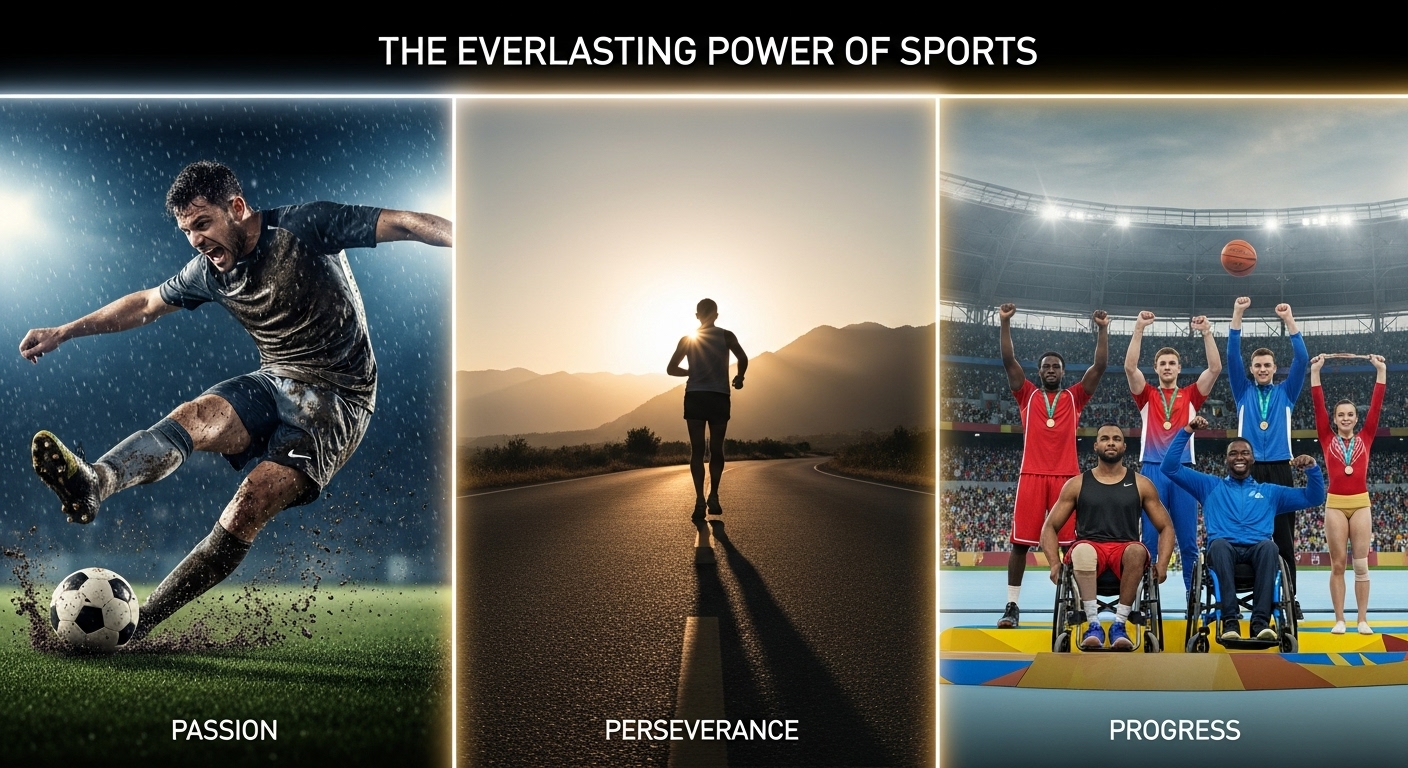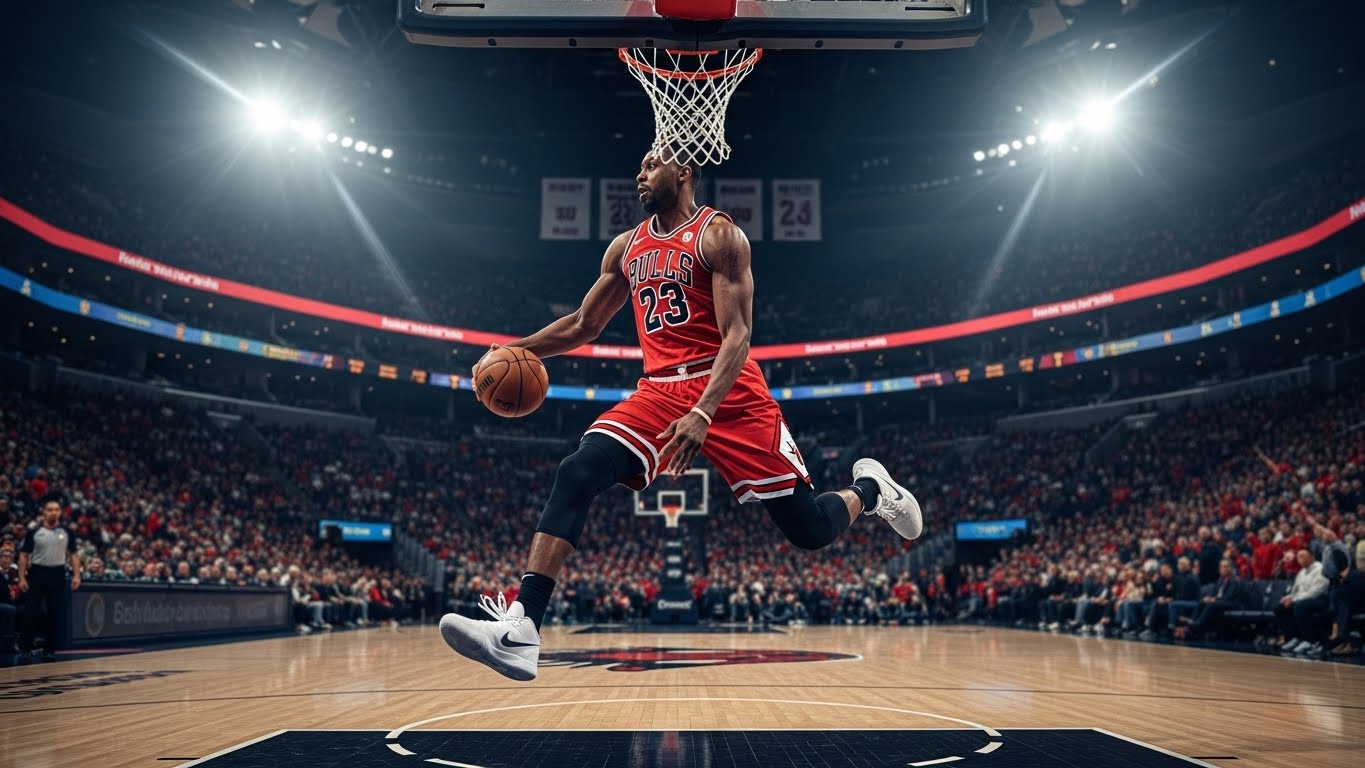Sports have always been more than a competition. They are a universal language that transcends borders, cultures, and generations. From the dusty grounds of local villages to the grand stadiums filled with millions of fans, sports embody the raw emotions of humanity—hope, ambition, unity, and triumph. They serve as a mirror to society, reflecting our collective strength, resilience, and passion. Sports are not just games played on fields; they are life lessons in motion, shaping character, discipline, and determination.
The Ancient Roots of Sports
The history of sports dates back thousands of years. Ancient civilizations such as Egypt, Greece, Rome, and China all developed unique forms of physical contests. The early Greeks introduced the Olympic Games around 776 BC, a tradition that symbolized unity and athletic excellence. Wrestling, running, javelin throwing, and chariot racing were among the first organized sports that attracted participants from different city-states. These games were not merely entertainment—they celebrated physical strength and honored the gods.
In Rome, gladiatorial games combined athletic skill with drama, while in China, martial arts and archery were practiced to develop discipline and agility. Ancient Egyptians enjoyed swimming and boating along the Nile, and Mesoamerican civilizations created ball games that carried both spiritual and competitive significance. These early activities laid the foundation for what sports would eventually become: a global force that inspires billions.
The Evolution of Modern Sports
The concept of modern sports began to take shape in the 19th century. Industrialization brought structure and organization to leisure activities, leading to the formation of official rules, clubs, and tournaments. Britain played a crucial role in shaping global sports culture, introducing games like football (soccer), cricket, rugby, and tennis. These sports spread across continents through colonization and cultural exchange, becoming integral parts of national identity.
The modern Olympic Games, revived in 1896 by Pierre de Coubertin, united athletes from all over the world under the banner of fair play and friendship. Since then, the Olympics have grown into the world’s biggest sporting event, celebrating diversity and human potential. Similarly, the FIFA World Cup became a global festival, demonstrating how a simple game of football can ignite collective passion and pride.
In the 20th and 21st centuries, sports evolved further through technology, media, and commercialization. Televised broadcasts brought events into every household, transforming athletes into global icons. Stadiums became architectural marvels, and sports industries flourished into billion-dollar economies. Yet, despite the fame and fortune, the essence of sports remained rooted in competition, teamwork, and spirit.
The Spirit of Competition
At its core, sports are about competition—the desire to push beyond limits, to test oneself against others, and to strive for excellence. This spirit fuels every athlete’s journey. Competition teaches humility in defeat and grace in victory. It nurtures resilience, perseverance, and focus—qualities that extend far beyond the field.
Great athletes like Muhammad Ali, Serena Williams, Lionel Messi, Usain Bolt, and Michael Jordan symbolize what happens when natural talent meets relentless effort. Their stories inspire millions to dream big, showing that greatness is earned through sacrifice and discipline. Every athlete, whether amateur or professional, shares this universal pursuit of excellence. It is the heartbeat of sports, the reason why people dedicate years to training and preparation for moments that may last only seconds.
The Role of Sports in Building Character
Sports shape more than just physical strength; they build mental and moral character. From an early age, children who play sports learn teamwork, respect, and leadership. They understand the value of discipline and time management. Losing teaches humility, while winning demands responsibility. These life lessons make sports an essential part of personal development.
Team sports like football, basketball, and hockey emphasize collaboration, communication, and trust. Individual sports like tennis, athletics, and swimming teach self-reliance, focus, and accountability. Whether one plays for fun or at a professional level, sports instill values that carry into every aspect of life—education, work, and relationships.
The Global Impact of Sports
Sports have the unique power to unite people across nations, languages, and beliefs. During global tournaments, rivalries fade, and flags wave side by side. Events like the Olympics or the World Cup turn strangers into teammates, creating a shared sense of belonging. Sports diplomacy has even helped ease political tensions throughout history. The famous “Ping Pong Diplomacy” between the United States and China in the 1970s is a classic example of how sports can bridge divides where politics cannot.
Major sporting events also contribute to national pride and unity. When a country wins a gold medal or a world championship, it becomes a moment of collective celebration. People from different backgrounds come together under a common identity. Sports remind us that despite our differences, we share the same emotions—joy, disappointment, excitement, and hope.
Sports as a Source of Inspiration
Every athlete carries a story—a journey of struggle, persistence, and transformation. Some rise from poverty, others overcome injuries or discrimination. Their journeys become symbols of hope for millions who see reflections of their own challenges. When an underdog triumphs, it represents the universal belief that anything is possible.
For example, athletes who break barriers inspire social change. Jackie Robinson challenged racial segregation in baseball. Billie Jean King fought for gender equality in tennis. Paralympic athletes redefine limits of human ability, proving that determination knows no boundaries. Sports continually remind humanity that dreams are not confined by background or circumstance.
The Business of Sports
In modern times, sports have become a thriving industry. From broadcasting rights and sponsorships to merchandising and tourism, sports generate billions of dollars annually. Major leagues like the NFL, NBA, Premier League, and IPL have turned sports into entertainment empires. Brands align themselves with athletes to reach global audiences, while cities compete to host mega-events that boost their economies.
However, this commercialization has both positive and negative effects. On one hand, it provides athletes with financial stability and recognition. On the other, it introduces challenges such as corruption, over-commercialization, and excessive pressure on players. Balancing passion with profit remains one of the ongoing challenges in the modern sports landscape.
Women in Sports
The rise of women in sports is one of the most transformative developments of the last century. For decades, female athletes fought for equal recognition, resources, and opportunities. Today, women’s sports are gaining unprecedented visibility and respect. Icons like Serena Williams, Megan Rapinoe, Simone Biles, and Naomi Osaka have redefined what it means to be a female athlete, inspiring generations of young girls worldwide.
Yet, challenges remain. Gender pay gaps, unequal media coverage, and lack of investment still hinder women’s sports in many regions. But progress continues, driven by advocates, athletes, and fans who believe in equality. The success of women’s leagues and tournaments shows that when given equal opportunity, female athletes can command the same excitement, skill, and passion as their male counterparts.
The Role of Technology in Sports
Technology has revolutionized every aspect of sports—from training and performance analysis to fan engagement. Wearable devices track an athlete’s heart rate, speed, and recovery time. Video analysis helps coaches refine tactics. Virtual reality assists in skill training, while artificial intelligence predicts player performance. Sports medicine has advanced to extend careers and prevent injuries.
Fans too have benefited from technological innovation. High-definition broadcasts, instant replays, and online streaming have made sports accessible to anyone, anywhere. Social media allows direct interaction between athletes and fans, creating a closer and more personal connection. Technology has transformed sports into a global, interactive experience that transcends geography and time zones.
The Emotional Connection of Fans
Fans are the soul of sports. Their cheers echo through stadiums, their loyalty survives defeats, and their emotions shape the very atmosphere of the game. A fan’s connection to their team or athlete is deeply personal—it represents hope, identity, and belonging. Sports fandom brings people together, fostering communities that transcend boundaries of class, language, and location.
Whether it’s a child wearing a favorite player’s jersey or a crowd singing an anthem in unison, the power of fandom is unmatched. It drives the energy of the game and keeps traditions alive. Even in digital spaces, online fan groups and discussions recreate the passion of stadiums. Sports without fans would lose their heartbeat.
The Challenges and Controversies in Sports
Despite its beauty, sports also face serious challenges. Issues like doping, match-fixing, corruption, and exploitation of athletes tarnish the integrity of competition. The pressure to win at all costs has led some to compromise ethics, risking their careers and health. Governing bodies continue to implement stricter regulations to preserve fairness and transparency.
Additionally, the mental health of athletes has become a growing concern. The constant spotlight, expectations, and criticism can take a heavy toll. More athletes today are speaking openly about anxiety, depression, and burnout. This shift toward openness marks an important step toward creating a healthier, more supportive sporting culture.
Youth and Grassroots Sports
While professional sports grab headlines, grassroots sports form the foundation of athletic development. Local clubs, school teams, and community leagues play a vital role in nurturing young talent. They offer children a positive environment to grow physically and socially. Youth sports also help combat issues like obesity and social isolation, promoting healthy lifestyles.
Investment in grassroots programs ensures the future of sports. Many legendary athletes began their journeys on small local fields with minimal resources. Encouraging participation at the community level builds a stronger sporting culture and identifies the next generation of stars.
Sports and Education
Integrating sports with education creates a balanced approach to personal growth. Schools that emphasize physical education foster teamwork, leadership, and confidence among students. Sports scholarships provide opportunities for talented individuals to pursue both academics and athletics. In universities, college sports serve as training grounds for future professionals while building school pride and spirit.
Education through sports goes beyond the physical—it teaches ethics, patience, and resilience. The lessons learned on the field often become the guiding principles for success in life beyond graduation.
The Future of Sports
The future of sports looks dynamic and inclusive. Emerging trends like eSports, mixed-gender tournaments, and sustainable sporting practices are reshaping the landscape. Virtual and augmented reality will offer immersive fan experiences, while data analytics will enhance player performance and coaching strategies. Inclusivity will become a defining goal, ensuring that sports are accessible to all, regardless of gender, ability, or background.
Environmental sustainability is also gaining importance. Major events are adopting green initiatives, such as eco-friendly stadiums and carbon-neutral operations. As awareness grows, sports will play a crucial role in promoting global responsibility and social progress.
The Universal Message of Sports
Ultimately, sports symbolize what humanity can achieve when driven by passion and purpose. They teach us to respect opponents, to rise after failure, and to celebrate effort as much as victory. Whether it is a child learning to kick a ball or a nation cheering for Olympic gold, sports connect us through shared emotion.
The beauty of sports lies in their simplicity—a ball, a goal, a finish line—and yet, their impact reaches the heart of society. They teach us that success is not just about winning, but about striving, learning, and growing together. Sports remain one of the purest forms of expression, reminding us that even in competition, unity and respect prevail.
Conclusion
Sports are timeless. They have survived wars, pandemics, and political upheavals because they speak to something deeper in the human spirit. They are stories of courage, teamwork, and dreams realized. From the earliest Olympic runners to today’s digital athletes, the journey of sports reflects our shared human journey—one of aspiration, struggle, and triumph.
In every cheering crowd, every determined athlete, and every game played with heart, the essence of sports continues to live on. It is more than an activity—it is a legacy that unites the world, one game, one goal, one moment at a time.



